10 Movie Flops That Became Modern Classics
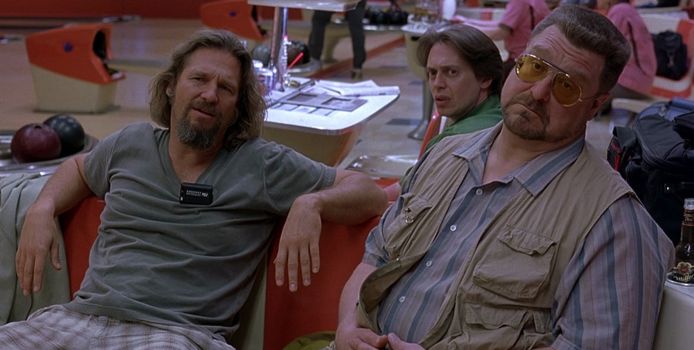
Massive film lover. Whether it's classic, contemporary, foreign, domestic, art,…
It’s always interesting to learn random movie trivia; it’s especially interesting when you learn that a classic or celebrated film tanked at box office upon its theatrical release. If these films are so great, how come they only sparked a mere fizzle when they hit the silver screen? Sometimes the director’s vision is trampled by the producers, and the film is re-edited, compromising the film.
On other occasions the press bombards the director, and the film itself for running over budget and the movie is burned at the stake before it even hits the silver screen. Politics are another factor: if a movie is about a “hot” issue, for instance, depicting a public figure or politician in a less than favorable light, it could also suffer at the box office.
There are many reasons why a film might bomb. However, thanks to home video, cable, streaming services and the wonderful words “director’s cut”, films that were otherwise stinkers got a chance to shine, and some of them even turned into beloved classics. What follows now is a list of ten such initial stinkers, that have grown to be some of the best-loved films around.
10. The Wizard of Oz (1939)

The Wizard of Oz is probably one of the most iconic films of all time. Its images, songs, and the story are indelible to cinema history, and nearly everyone who sees is endeared to the movie. So for a movie that is on eight of AFI 100 best film lists, got multiple Oscar nominations (and wins), with more honors and accolades to even count, how could it have been a bomb?
By today’s standards, $2.7, million dollars doesn’t sound like a lot, in terms of movie budgets. But in 1939 it was inconceivable. Although the film received positive reviews from audiences and critics, the scale of the film’s budget was just too large for the studios to recoup their loss. It’s easy to get caught up in the wonder and art of film making, and sometimes we forget one simple factor: filmmaking is a business. Studios need to make money, producers need a return on their investment and if the film doesn’t succeed it’s that much harder for them to make another.
Thanks to a more successful theatrical re-releases over the years and home video, the film is a classic we know it as today.
9. Blade Runner (1982)
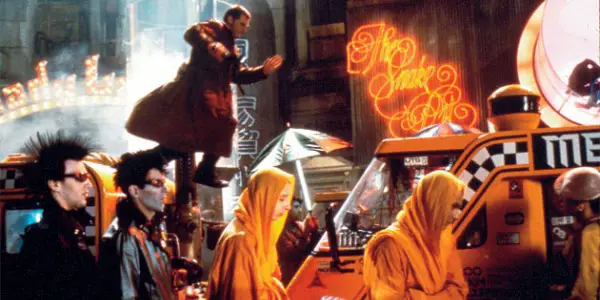
Blade Runner is considered one of the best science fiction films of all time. The film boasts a great story, a great cast, superb production design, and eye-popping special effects. Ridley Scott’s film is a classic, in the best sense of the word. But that all depends on which version of the movie you see.
For many fans, the definitive version of the film is the classic director’s cut that was released 1992, ten years after its theatrical run. Now available on DVD and Blu-Ray there are four versions of the film: the 1982 theatrical cut, the 1982 International Theatrical Cut, 1992 Director’s Cut, and the 2007 Final Cut. The biggest difference lies between the theatrical releases and the 1992 and 2007 versions: because of the film’s dark content, the studios wanted to alter the ending and add a voice-over track for Harrison Ford’s Deckard character to explain his motives. The tacked-on happy ending doesn’t jive with the tone of the film, and Harrison Ford’s voice-over feels hammy and forced. It’s even rumored that Ford intentionally delivered a bad narration hoping they wouldn’t use it in the film.
Critics hissed at the film after its 1982 release. Leonard Maltin’s review gave it one-and a half out of four stars saying the films had a “muddled script and main characters with no appeal whatsoever”. Sheila Benson of the Los Angeles Times called it “Blade Crawler”, and audiences who just came off of the Star Wars train weren’t warming to the very cold and dark tone of the film.
Ten years later, the VHS, Beta-max, and Director’s Cut of Blade Runner came out and a new cult formed around the movie. This cult turned into a legion, and this alliance hailed the new vision of the classic status it deserves. Praise to home video, or else this film could have been lost in the celluloid ether.
8. Vertigo (1958)

By the time Vertigo was released, Afred Hitchock was a household name. His television show Alfred Hitchock Presents defined his screen persona, and his status as a high-profile director was assured after his “peak years” in the 1950’s. After Rear Window, To Catch a Thief, and The Wrong Man it seemed like Hitch could do no wrong by his audiences and the studios. But in 1958, Hitchc*ck would perplex audiences with his challenging psychological thriller, Vertigo.
Of course, nowadays Vertigo is considered one of the director’s best films. Critics at the time, however, had a different opinion of the film when it first came out. Variety called the film “slow”, other publications occasionally praised the technical side of the film, but the narrative was frequently questioned due to its complexity.
Now that everyone loves the film, held high among Hitchc*ck’s other classics, one must ask the question: what made everyone change their minds? One could argue that the film was ahead of its time, and the complex and dark tale of obsession was too much to handle for people in 1958. It could also be argued that this film is entirely hard to place. It’s adventurous, but it’s not an adventure film. It has thrilling moments, but it’s not your conventional thriller, and if you want to say it’s a romance you might want to reevaluate your love life. If you’re known as “the master of suspense”, and your films have a thrilling rhythm to them, people are likely to waver when you change your rhythm. The modern audiences have a more diverse pallet; they have reevaluated the film and praise it for the classic that it is.
7. Brazil (1985)
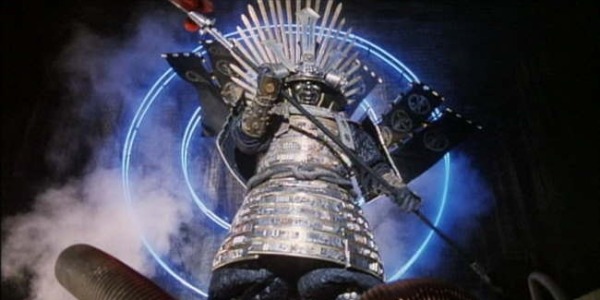
Now a celebrated cult film, Brazil was a total box office disaster, that followed an equally troubling production, resulting in a movie that the studio didn’t want to release. As a member of the recently disbanded Monty Python troupe, director Terry Gilliam earned himself a decent reputation for the success of his directorial efforts including Monty Python and the Holy Grail as well as Time Bandits in 1981.
Brazil would prove to be another challenge for the imaginative director as the film was criticized for being too bleak a depiction of the future. Universal Studio’s head Sid Sheinberg insisted that Gilliam cut the film from its original running time of 142 minutes to the running time of 94 minutes. It was as if no one took any cues from the disappointing box office return of the truncated Blade Runner theatrical cut just three years beforehand; apparently it wasn’t an example yet of how damaging re-cutting a film can be.
Losing nearly an hour of footage, with a tacked on happy ending negated the whole vision of the film. Brazil only brought in $9.9 million dollars at the box office, failing to exceed the 15 million dollar budget. In his rebellious spirit, Gilliam, without permission from Universal, screened the full version of Brazil where it was received with positive reviews and praise. These screenings caught the attention of The Los Angeles Film Critics Association, who awarded Brazil with the “best picture” award.
6. The Shawshank Redemption (1994)

Ironically, the more successful Stephen King screen adaptations are from his dramatic narrative, not the horror stories he’s so well known for. And out of those dramas, many consider The Shawshank Redemption to be the best. Some may find this hard to believe (after all, it has ranked #1 at the IMDb Top 250 for years and years), but this film which so many people treasure didn’t do so well at the box office.
While it earned high critical acclaim and seven Academy Award nominations, the film failed to draw its budget by nine million dollars upon its theatrical release, and received a limited release to only 33 theaters when it first came to theaters. Critics warmed up to the film immediately; it had an excellent cast who delivered career-defining performances, yet it only made a fizzle at the box office.
However, that fizzle sparked a fire that led to over 320,000 VHS tapes distributed through the U.S., making it the number one rented film of 1995. Ironically the theater experience is always preferred way to see films, but The Shawshank Redemption hit its stride in the home video market, go figure.
5. The Big Lebowski (1998)
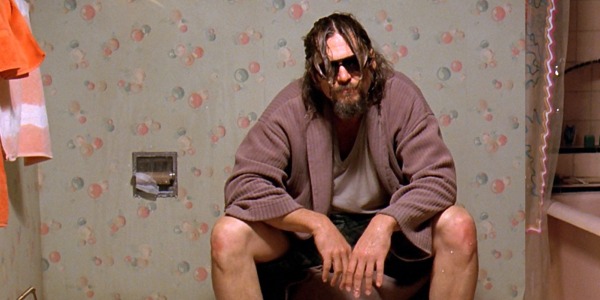
After the success of their film Fargo, the writing/directing brothers Joel and Ethan Coen aimed their talents at another wry blend of off-beat humor and quirky characters. The Coen’s did what they do best with The Big Lebowski: making people laugh with great dialog coming from screwy characters that find themselves in far out scenarios.
Always quoted and referenced, The Big Lebowski is a cult darling among cinephiles and casual moviegoers alike. The film has many fans, and every year since 2002 there’s been an annual Lebowski Fest where fans of the movie can geek out, drink White Russians and dig on their favorite movie. You’d think a movie with such a devoted following, created by one of the hottest writing-directing teams, would have been a hit, but it wasn’t. The Big Lebowski only ran in theaters for six weeks, with lukewarm critical reviews to match.
This seems to be the modus operandi for the growth of a cult movie: a hit director makes a hard-to-place movie, and it slides past the critics, but generates a massive following. Well, that’s the case here with The Big Lebowski, but it’s hard to avoid the question, why did it fail? Well, it is indeed a strange film, with strange characters and scenarios. But that’s why it’s great, and that’s what the Coens do best, and it’s why people still think “shut the f*ck up,” whenever they meet a Donny, or will tell someone “Chinaman” is not the preferred nomenclature.
4. Donnie Darko (2001)

Sometimes politics come into play when dictating the success of the film at the box office., even if the subject isn’t politics. Although Donnie Darko isn’t a political movie, nor does it have any controversial subject matter, but if you’re familiar with the film’s finale it’s understandable to see why people were hesitant to release the film shortly after the 9/11 tragedies. Its October debut only reached fifty-eight screens in the U.S., raking in a meager $110,494 in its opening weekend.
Later on in March 2002, DVD sales of Donnie Darko were so high, it prompted Newmarket Films to release a Director’s Cut of the movie to further bolster sales. Ironically, it’s the directors cut that started the cult following, even though fans seemed happy with the theatrical cut and were happy with the film – but true, dedicated fans will always want to have another version of their favorite story to fawn over.
Critics seemed split on the movie, but you cannot argue with the fans. Donnie Darko is synonymous with movie buffs of all kinds, and all kinds of movie buffs love the movie. Despite a poor box office run the film is still a classic, and it just goes to show that good content will always triumph.
3. Heaven’s Gate (1980)
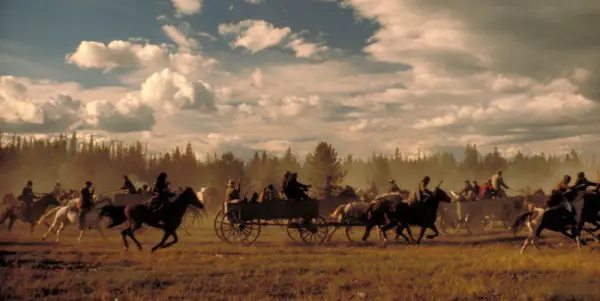
After his best picture winning Vietnam epic The Deer Hunter, the brilliant heist comedy Thunderbolt and Lightfoot, and a really cool United Airlines commercial, United Artists was ready to give director Michael Cimino whatever he wanted for his next project, Heaven’s Gate. What was going to be an epic-scaled western, chronicling the Johnson County War, spun out of control, and the director was running a record high budget and production was plagued by egos and endless re-shoots.
It seemed as if critics were lining up to clobber Michael Cimino for his dictatorial directing and out of control budget. Although the production was a nightmare (you can learn more from the documentary “Final Cut:The Making and Unmaking of Heaven’s Gate“) the film was cut from a running time of 345 minutes to a meager 149 minutes. At this point the press had made Heaven’s Gate target of all the headlines, and by the time it made it to the theaters so much negative press surrounded the movie audiences were poised against the film. The theatrical cut was cobbled together hastily, and the film earned the title as one of the worst films of all time.
Since its disastrous theatrical run, Heaven’s Gate has garnered some notoriety thanks to a newly restored Director’s Cut DVD/Blu-ray release through the Criterion Collection. Despite the renaissance of Heaven’s Gate over the years, some people still won’t budge, and consider the film a bust; others have taken to the film and appreciate its scope and length including yours truly.
2. It’s a Wonderful Life (1946)
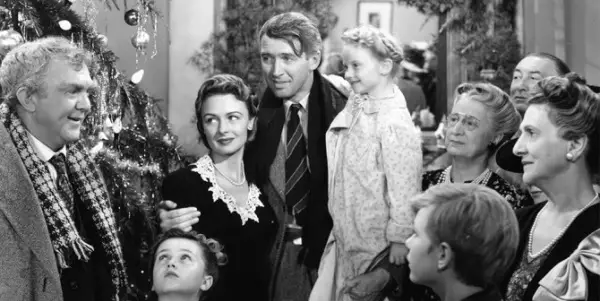
This isn’t just a classic, but a staple holiday film for families, spanning generations. For good reason, it has a great story, excellent performances, and its tear-jerking finale is the foundation of the modern blockbuster.
Upon its general release It’s A Wonderful Life placed in 26th place (ironically one place before Miracle on 34th Street), resulting in a $520,000 loss for RKO pictures. The film even caught the attention of the House of Un-American Activities Committee and was accused of Communist propaganda regarding Lionel Barrymore’s Mr. Potter character. In 1947, the last thing you wanted to hear was the word communist.
The film wasn’t a complete bomb: it earned a few Oscar nominations, none of which it won, but it didn’t exactly capture the public’s imagination the way it does today. It wasn’t until broadcast television that the film found its second life, and it runs every year to this day during the holiday season to many happy viewers. Ironically, TV in the late forties, early fifties seemed like a kiss of death to the motion pictures, but for Frank Capra it gave way to one of his most beloved films.
1. Citizen Kane (1941)
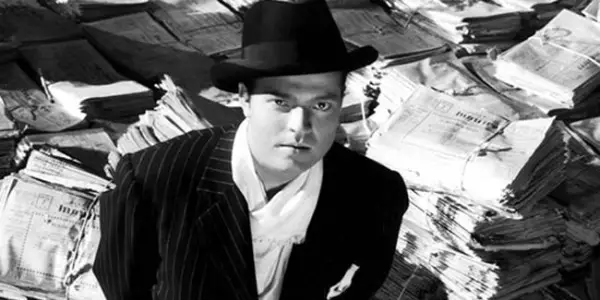
Of course, the movie that’s frequently referred to as the “number one film of all time”, was, of course, a commercial disappointment. Orson Welles was the wunderkind of radio and his appetite for bigger game had to quell. After terrifying the nation with his infamous War of the Worlds broadcast, he was given a contract to write and produce two feature films. This wasn’t any movie deal, but the 25-year-old director had final cut, a $500,000 budget and complete artistic control of both pictures.
Once Welles set out to make Citizen Kane, a film inspired by a very real life and very temperamental newspaper tycoon William Randolph Hearst. Once the word got out that the exploits and love life of Hearst would be the subject of Welles’ film, Hearst waged war against the movie and Hollywood itself, not realizing this war launched against the movie would only increase its popularity. Welles did what he could to aggravate Hearst as well as the Hollywood empire that so eagerly welcomed the brash, young, kid genius.
The film is a classic among classics, but Welles‘ disdain for the studio system and c*cky attitude didn’t make him a whole lot of friends around tinsel town, and Citizen Kane was actually booed at the 1942 Academy Awards. The film would be shelved for over twenty years until it was dusted off and discovered for the masterpiece that it is today.
Controversy and arrogance had a large hand in the disappointing theatrical run of the film. But like all the other movies in this collection Citizen Kane is an innovative and groundbreaking film, as is the case with all of the films on this list.
If you divorce these movies from their controversies, critical clobbering, or sheer bad timing one could argue that they could just be ahead of their time. 1942 might have been too soon for an incisive expose on a larger than life public figure. Ridley Scott’s hapless atmospheric masterpiece was probably too violent for a Star Wars-hungry crowd in 1982. If people questioned the media thirty years ago the way they do now the public might have embraced these films sooner than they did. But you be the judge, what are some of your thoughts on these films? That’s the beauty of film; there’s no wrong answer.
Which of these classics are among your favorites? I’m sure there are some – share in the comments below!
(top image: The Big Lebowski – source: Gramercy Pictures)
Does content like this matter to you?
Become a Member and support film journalism. Unlock access to all of Film Inquiry`s great articles. Join a community of like-minded readers who are passionate about cinema - get access to our private members Network, give back to independent filmmakers, and more.
Massive film lover. Whether it's classic, contemporary, foreign, domestic, art, or entertainment; movies of every kind have something to say. And there is something to say about every movie.













